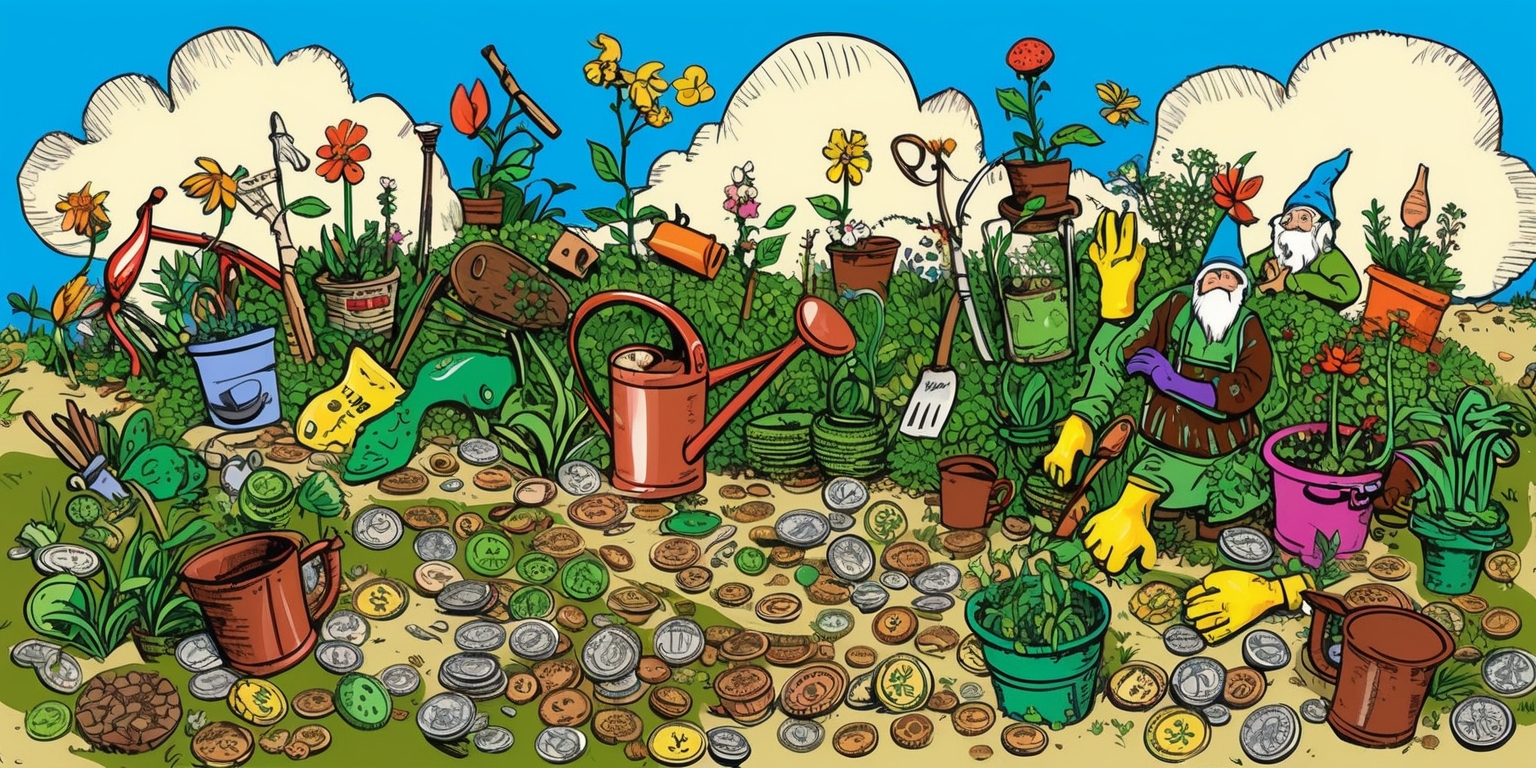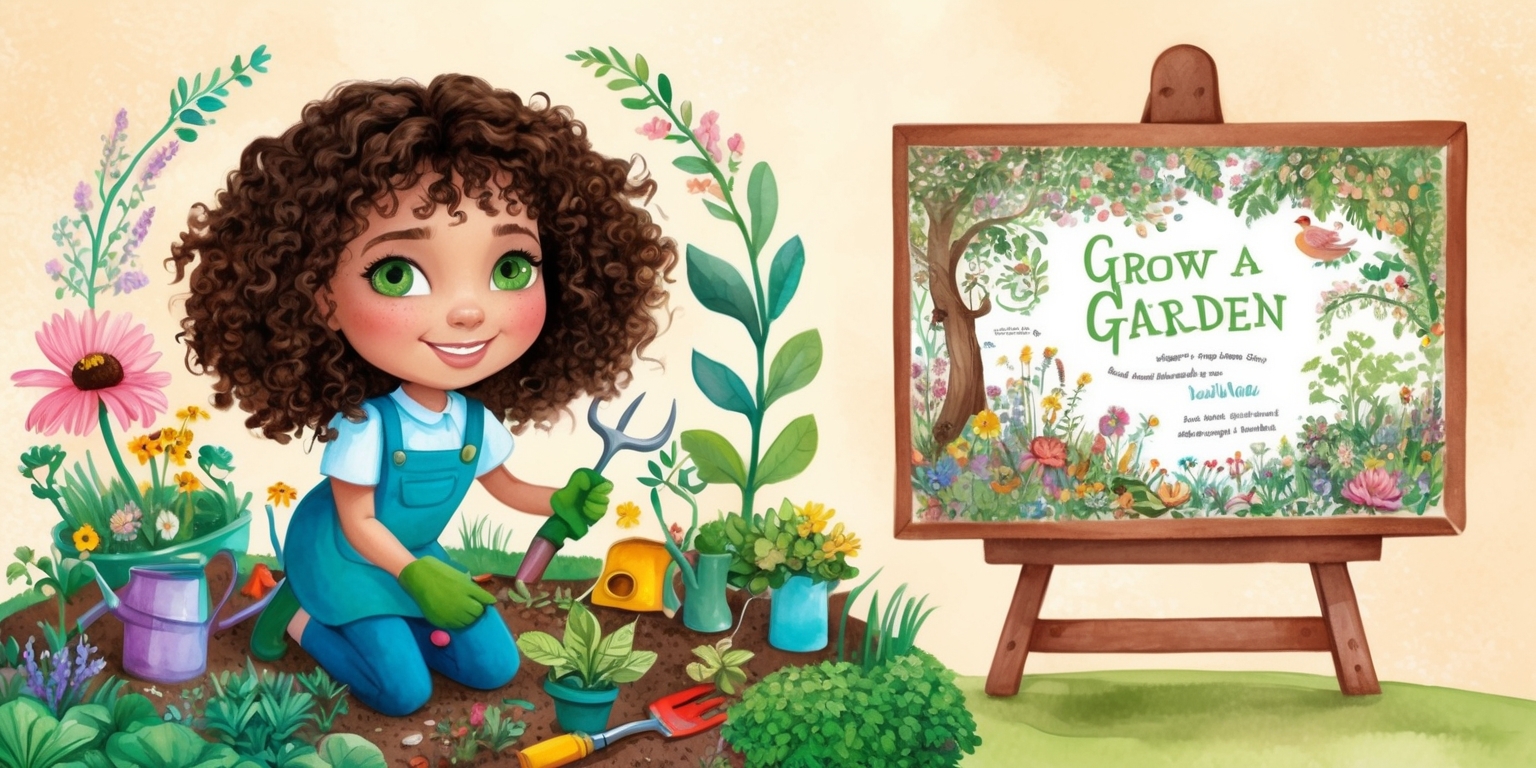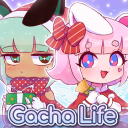Gardening Strategies: Navigating a Dynamic World of Gear, Currency, and Customization
Jun 04, 2025

The world of Grow a Garden unfolds as a vibrant realm where tactical planning and resource collection are key to building the garden of your dreams. In this immersive experience, every decision influences your progress and sets the stage for creative cultivation. Players are encouraged to explore a range of strategic options, from gathering the essential in-game currency to selecting gear that best complements their garden style. With a blend of interactive challenges, dynamic shop mechanics, and ever-changing inventories, the game offers a multifaceted adventure that rewards thoughtful planning and timely purchases. As you navigate through this meticulously designed universe, understanding each facet becomes essential for achieving your gardening ambitions.
Gameplay Dynamics and Strategic Exploration
Grow a Garden offers a dynamic platform where planning and creativity intersect with gameplay mechanics. The process of collecting gear is not merely transactional but becomes an integral element of a more expansive strategy that influences the overall success of your garden. Players must approach the in-game store with a mindset of anticipation, leveraging both Sheckles and Robux to secure the necessary tools. The game encourages strategic thinking, ensuring that each acquisition has a meaningful impact on how plants are nurtured and displayed. The ever-changing selection of available gear prompts a rewarding challenge as players must decide which items best align with their long-term vision. Every purchase is a step toward creating a unique garden that evolves over time.
Currency and Strategic Acquisition
The virtual economic system within Grow a Garden centers around Sheckles, encouraging players to engage in careful resource management. Acquiring gear is an investment in the growth and aesthetics of your virtual garden. Because the marketplace requires time and effort, accumulating enough Sheckles becomes an important part of the game’s challenge. This need for strategic spending adds a layer of depth, pushing players to evaluate the merits of instant satisfaction in relation to long-term decorative goals. Additionally, the option to use Robux for purchases introduces a dual-currency system that compels a balance between earned rewards and premium transactions. Such elements make the acquisition of gear not only a necessity for progress but also a thoughtful decision that resonates with each player’s individual style and strategy.
Resource Accumulation and Monetization Strategies
Central to the gameplay is the This rewording preserves the original meaning while using entirely fresh language drive to accumulate Sheckles, the currency that powers every purchase in Grow a Garden. Players quickly learn that obtaining the essential gear requires patience and a keen understanding of the value offered by each item. The commerce system encourages spending wisely; the decision-making process is enriched by intermittent opportunities to revisit the Gear Shop. This cyclical process presents a natural rhythm to the game, where players track their earnings and plan their next move. The design implies that every session could be the moment to seize that perfectly aligned promotion or limited offer. Moreover, the dual option of spending premium currency provides a parallel avenue for swift advancement, blending organic growth with the allure of immediate improvement.
Navigational Insights and the Landmarks of the Garden Realm

One of the game's most engaging features is its intuitive layout, designed to guide players effortlessly through the expansive garden world. The Gear Shop is strategically placed at a distinct point opposite the Seed Shop, identified by its prominent green and white striped canopy. This visual marker, together with signs that clearly indicate its presence, ensures players can locate essential services without hassle. Adjacent to other interactive elements like the Pet Egg Shop, the environment is crafted to optimize exploration and engagement. Each area is thoughtfully juxtaposed with complementary locations, allowing players to seamlessly transition between various facets of gameplay. The landmarks and navigational cues within Grow a Garden serve as vital signposts, enhancing the overall immersive experience while ensuring that players remain aware of their immediate surroundings.
Interactive Visitor Engagement and Character Roles
A central character in the Gear Shop, Eloise, stands as the gateway between the player and the game’s unique offerings. Interactions with Eloise are engineered to combine practicality with an inviting appeal, providing players with direct access to the gear selection process. By selecting the option to view the Gear Shop, players trigger a transition that reveals a curated menu of items. This dialogue-driven mechanism not only personalizes the experience but It further enriches the narrative by introducing an extra dimension of depth to the otherwise transactional process. The character’s role is integral in guiding users through the steps of making a purchase while maintaining an inviting atmosphere. Through such interactions, players are subtly encouraged to explore multiple strategies and consider how each gear item can be used to enhance their overall gameplay and aesthetic appeal.
Event-Driven Reward Systems and Exclusive Offerings
Grow a Garden is designed to reward active participation in game events, where limited-time gear plays a significant role. These exclusive items are available only during special occurrences, infusing a sense of urgency into the gameplay. When such opportunities arise, players are prompted to act quickly, making strategic decisions that can define the aesthetic and functional trajectory of their gardens. Missing the window for acquiring these exclusive items means that the only route to obtain them later is through trading, providing an additional layer of social and economic interaction among players. The innovation behind such time-sensitive rewards keeps the ecosystem vibrant, as participants continually reassess their strategies and trading options. This event-driven approach deepens the game’s complexity and ensures a dynamic and evolving challenge that extends beyond simple gear collection.
Visual Aesthetics and Detailed Design Features
The user interface and store presentation in Grow a Garden contribute significantly to the immersive experience. The design elements are thoughtfully crafted, from the vibrant canopy at the Gear Shop to the seamless integration of interactive icons and menus. Visual cues such as color schemes and thematic symbols not only guide players but also evoke a sense of continuity and style throughout the game. The aesthetic choices reflect the game’s overall philosophy of merging functionality with visual delight. By paying close attention to the presentation of gear items and the organization of the shop, developers have ensured that each visit to the store is both a practical and pleasurable experience. The artistic design elements underscore the game’s commitment to providing an environment that is as engaging visually as it is deep in gameplay strategy.
Gear Functionality and Tactical Application
The practical use of gear items in Grow a Garden stretches beyond simple decorative choices, influencing various in-game mechanisms. Each gear item comes with a specified number of uses or a functional duration, requiring players to manage these resources efficiently. Once acquired, items must be actively deployed from the inventory, adding a layer of active management to the gameplay. This system encourages careful monitoring of each item’s utility and condition, ensuring that no resource is wasted. The tactical application of gear significantly impacts the aesthetics and operational dynamics of a player’s garden. Therefore, every choice made at the shop is a direct investment not only in appearance but also in the operational efficiency of garden management. Such dynamic usage instills a sense of responsibility and strategy, making every acquisition a critical decision point in the game.
Store Refresh Mechanics and Market Timing
A distinctive feature of the Gear Shop in Grow a Garden is its rapid refresh cycle, a design choice that keeps the gameplay environment both dynamic and unpredictable. The shop inventory resets every five minutes, allowing players a recurring opportunity to explore new gear options. This mechanic introduces a real-time strategic component, as players must be aware of this cycle to make timely purchases. The refresh system acts as both a reward and a challenge; if an item is missed, the same possibility is likely to reappear soon, yet the timing may require revisiting the shop more frequently than expected. This feature necessitates a harmonious blend of measured patience and decisive, forward-thinking action, as players strategize around the clock to secure optimal gear. The rhythmic pace of inventory updates contributes to the overall energy and excitement, ensuring that each visit to the shop offers fresh possibilities.
Customization and Personal Expression Through Gear
Personalizing the garden is a major aspect of the Grow a Garden experience, and gear plays a pivotal role in this customization process. Every gear item not only enhances functionality but also contributes to the individual style of a player’s garden. The process of selecting and deploying gear becomes a creative exercise, where each item’s design, usage limits, and overall impact are weighed carefully. Players can mix and match different gear types, tailoring their garden to reflect both operational goals and aesthetic preferences. This level of customization invites continuous experimentation and adjustment, resulting in a garden that evolves with each decision made at the Gear Shop. The game thus transforms gear selection from a routine task into an expressive medium for personal storytelling and creative design.
Integrative Mechanics and Shop Interaction Dynamics
The Gear Shop itself is more than a static marketplace; it is an integral part of the game’s interactive ecosystem. The integration of dialogue with Eloise, the strategic placement of the shop within the garden landscape, and the structured inventory refresh all contribute to a seamless user experience. Navigating to the shop is an experience in itself, laden with intuitive cues and clear directives. The orchestration of these elements ensures that every interaction at the shop feels both purposeful and engaging. Such integrative mechanics reinforce the idea that every element in Grow a Garden, from planting to purchasing gear, is interrelated. This systemic design invites players to immerse themselves fully, engaging in multiple layers of interaction that elevate the ordinary process of buying items into a dynamic part of the overall adventure.
Garden Customization and the Broader Gameplay Landscape
In Grow a Garden, the act of collecting and deploying gear resonates far beyond basic store transactions; it underpins the expansive narrative of garden evolution. The game encourages players to see gear acquisition as a fundamental aspect of their strategy, influencing everything from plant health to decorative flair. This broader gameplay landscape is characterized by the interplay between resource management, strategic planning, and aesthetic expression. Each gear item plays a role in unlocking new capabilities and enhancing the overall appeal of the garden. By engaging with the multifaceted marketplace, players are drawn into a cycle of continuous improvement and exploration. The cumulative effect of every decision made, from saving Sheckles to refreshing the shop, creates a vibrant tapestry of progress that defines the player's journey in an ever-evolving garden world.







